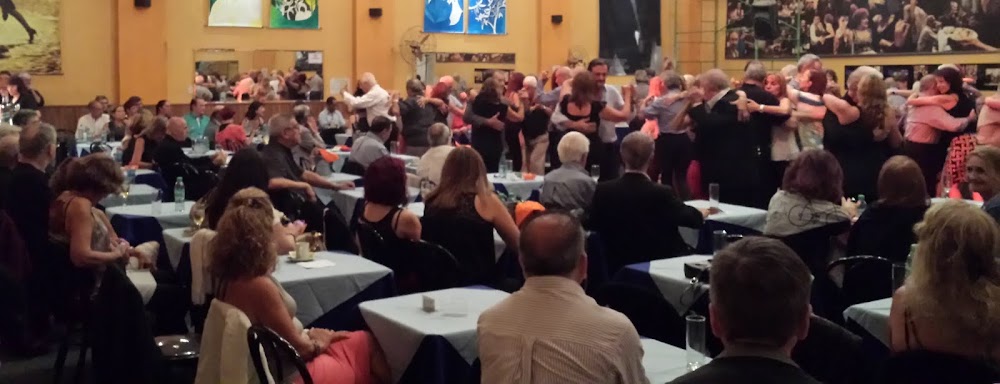I mentioned here the lack of diversity in milongas in Edinburgh's long-established tango dance scene. The clip above arrived in my inbox this evening. It is about a new milonga in Edinburgh.
Jenny and Ricardo Oria are the most well-known tango dance teachers in Scotland. I know them because for while I went to their classes. They are not responsible for my change of views about how to learn to dance tango. While it is true my experiences generally in classes did inform my views, those opinions about teaching dance versus learning to dance in a more traditional, less commercial way are not related to specific teachers with whom I took classes. They are more to do with more general views about learning to dance, learning languages, a preference towards real social learning and an impulse towards choice, freedom and independence.
I did classes with some teachers in another town for six months or so but one day I danced with another woman, to kill (a lot of) time waiting for a man to become free in class. I was soundly reprimanded for that so although it entailed much further travel I moved to Jenny and Ricardo's classes in Edinburgh where things were more relaxed. I was there (dancing in the woman's role) during 2013 but less and less through the year as increasingly, I danced socially locally and further afield.
As a couple they have a sense of fun and complement one another well. In the days when I tried to avoid social dance events with performances less than now I thought they suited the low-key, languid, elegant movements they sometimes chose. I was starting to be interested in the music before I met them but Ricardo played so many classic tracks from the Golden Age that it was probably when I was with them that I started to pay attention to the music in a way I hadn't with the previous teachers who played tracks more repetitively.
They are for me among the best milonga hosts I know in the UK. They are welcoming, attentive to their guests, but not overpowering - and you do feel like a guest more than a client. They take care, socially, of new people in their milongas. There is always water made pretty and refreshing with cucumber and mint or strawberries and snacks. They come round with chocolate later in the evening. There always seems to be a lot of people willing to help.
Bailongo apart - their milongas have been the approximately quarterly weekend events of workshops and milongas in Edinburgh called Nortena. I haven't been for a while partly because since a lot of the attendees were class dancers more than they were milonga dancers the floorcraft, especially when busy in a milonga space which was quite intimate could be a bit haphazard for those conditions. Another reason I haven't been to Nortena lately is because I don't always like the music. The early Fresedo in the video clip below (Felicia, 1927) is a good example. It is not all like that. When I was newer though I really enjoyed Nortena.
No problem for me with new people dancing in milongas if they stick in line and respect each other's spaces. In fact, there is no better way to learn to dance socially than to try it for real. I've heard that the Orias' teaching style has changed a bit. In 2014 I went a few times to learn to dance the guy's part but found when there were insufficient women the guys just expected me to dance the woman’s role. I wasn't ballsy enough to stand my ground then and left to just start walking in the other role in the milongas instead, a choice which has worked out well for me dance-wise and saved me a lot in petrol and classes. Since then I hear things have changed. I also hear more is said in class these days about the conditions in real milongas though I recall this was never absent. With luck this will translate to good conditions in the ronda.
This new milonga will I hope bring new people in to see what real social dancing looks like where there is much to learn just by watching and listening and to dance with regular social dancers who, like me have also been feeling that lack of diversity in milongas. I say regular like me though lately, between poor conditions for dancing and unreliable music, I have not been that much of a regular in Scotland.
I have every hope this new milonga will be nicely set up and have a good floor. Certainly, Nortena was nicely organised [picture] with tables, cloths and from what I can remember, suitable lighting. Video here. With warm hosts, sufficient seating, adequate lighting, dancing in the ronda and I hope great, classic tandas that will make new dancers fall in love with the music as I did then this milonga sounds promising.

No comments:
Post a Comment